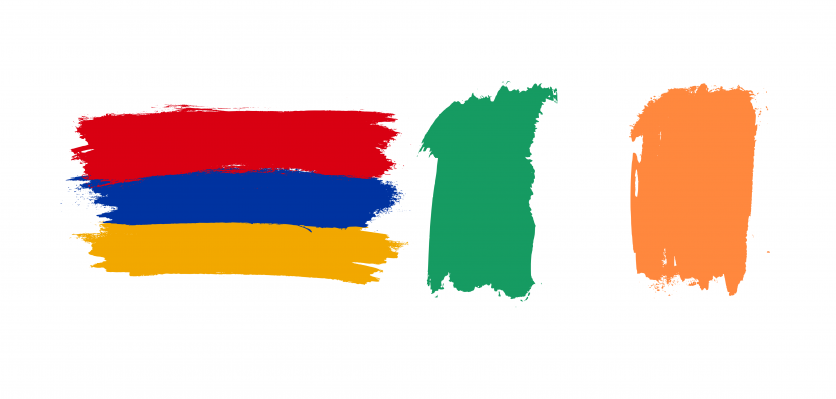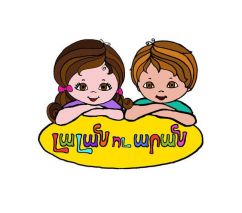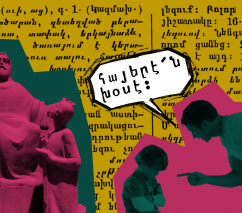An Irish lesson on my Armenian identity
September 03, 2019
Language has always played a major component in our cultural identity as Armenians. But what do other communities have to say about this topic? We reflect on the experiences of the largest American ethnic group—the Irish—and, in doing so, find the commonalities in their struggle and the universal lessons we can take away from history
'Do you speak Irish?'
In sixth grade, we moved from the cultural and linguistic melting pot that was our working-class Boston suburb to a quiet, affluent, and mostly white Connecticut town. In the first week at my new school, I was in the business of making friends. Sitting across from me in science class was an Irish boy with piercing blue eyes and golden brown hair. He had a melodic accent when he spoke—particularly when he pronounced his “L”s; the way he said “Lilly” made my heart leap. I’ve always found the Irish lilt intoxicating.
His hands mirrored his voice in tune, as they pounded the desk to a beat of his own creation. Boston is to the Irish what Glendale is to Armenians: the mecca of their diaspora. So, being from this place gave me the confidence to say what I did next: “Do you speak Irish?” At once, the spry Celt stopped his drumming and looked at me, appalled—almost offended. “There is no such thing as an Irish language! We speak English in Ireland.” Mortified by my blunder, I did not say anything for the rest of the class. Naively, I had assumed that every ethnicity, every nation, and every culture on Earth had a unique language of their own. Neither I, nor that English-speaking Irishman, could have even begun to fathom the thorny history of his ancestral tongue.
Tír gan teanga, tír gan anam...
Այն երկիրը, որ լեզու չունի՝ հոգի չունի...
("Ayn yerkiruh vor lezu chuni hogi chuni..." | "A country without a language is a country without a soul.")
.jpg) The 1916 Easter Rebellion called for Irish independence from centuries of British rule. As the leader of this uprising, Patrick “Pádraic” Pearse was soon executed and became a martyr for the Irish Cause.
The 1916 Easter Rebellion called for Irish independence from centuries of British rule. As the leader of this uprising, Patrick “Pádraic” Pearse was soon executed and became a martyr for the Irish Cause.This poetic Irish proverb today stands as a powerful insignia of the modern Irish language revitalization movement, but its origins are from a not-so-distant past, when the Irish language was forcibly sanitized from the tongues of her rightful possessors. Patrick “Pádraic” Pearse was a champion of the Irish rebellion against British oppression a century ago. He uttered these words as a means to galvanize Irish interest in their ancestral language. Pádraic was, essentially, the Irish equivalent of our Generals Andranik or Dro or Gevorg Chavush. A poet and activist for the Irish Cause, he was executed at just 36 years of life—the same age Chavush died defending Armenians from Turkish and Kurdish aggression during the Hamidian Massacres that preceded the 1915 genocide. Here were two great men who perished fighting different battles against the same ugly ideology at the same point in their lives.
Though Armenia and Ireland are separated by an entire continent, I’ve always felt a peculiar connection with the Irish people. About 10 percent of the American population openly claims Irish ancestry and more Irish live in this country than in Ireland itself—a notion that is quite familiar to globalized Armenians. Our similarities range from the flippant—we share great folk music, love a good drink, and our national churches and lush landscapes adorn postcards like majestic, steadfast beauties from an ancient era—to the ugly: we both are notorious for our fiery tempers and troubled histories with our neighbors. Or, more precisely, we both are descended from fierce warriors and artists who, for centuries, were subjected to unjust cruelty by countless invaders.
Resilience as the truest mark of a culture
_edited(1).jpg) One of the Armenian people’s greatest patriots, Kevork Chavush helped lead the charge against marauding Turkish and Kurdish forces in the final years before the Genocide. He pushed for Armenian independence from the increasingly tyrannical Ottoman government before valiantly dying in battle.
One of the Armenian people’s greatest patriots, Kevork Chavush helped lead the charge against marauding Turkish and Kurdish forces in the final years before the Genocide. He pushed for Armenian independence from the increasingly tyrannical Ottoman government before valiantly dying in battle.On April 24, 1915, centuries of anti-Armenian persecution climaxed in the execution of hundreds of our people’s greatest intellectuals, politicians, writers, and artists; this event is widely recognized as the official start of the Armenian Genocide. More than a century has passed and the 24th of April still shakes Armenians to their core.
Exactly one year later, on April 24, 1916, the genocide was in full swing, staining our ancestral lands with the blood of her natives and the relics of their culture. But elsewhere in the world—where God was still lurking—it was Easter Monday, and on the other side of the European continent, another tide was turning.
In the sleepy morning hours, the Irish people unexpectedly took up arms against the colonizing British. After centuries of suffering massacres, famines, and religious, cultural, and linguistic suppression, the Irish revolutionary movement awoke from its subdued slumber and resumed its long, arduous journey toward liberation. Though this Easter Rebellion lasted just five days and ended in abject failure—with Pádraic arrested and executed—the Celts trudged on with their crusade. Pádraic himself regarded his armed struggle as a success, so long as there was "blood sacrifice" and future generations honored and continued the quest for freedom.
This romanticized view of revolution was also shared by our heroes—the Chavushes and Andraniks and Dros—who died without fulfilling the dream of a free and independent Armenia, but without whose sacrifice, the very existence of a Republic of Armenia today would not have been possible. Last year, we celebrated the 100th anniversary of the First Republic of Armenia. We must not lose sight of the magnitude of this sacrifice—made in blood, sweat, and tears—and the legacy it has left on our culture today.
While attending a lecture on Hrant Dink in London a few years ago, I met an Irish-Armenian who spoke Armenian with an Irish accent. With sea blue eyes and dark tousled hair, he was spellbinding—like encountering a unicorn. I did not ask if he spoke Irish, but something tells me that he would’ve answered differently from the lad in grade school.
What is it about language anyway?
For the past century, the Armenian people have struggled against Goliath forces to maintain their culture, language, religion, and traditions in an un-Armenian (and sometimes, anti-Armenian) world. The uniqueness of the Armenian alphabet and language holds a sacred place in the hearts of her children. My 11-year-old self believed this was a universal sensation.
Sure, that boy in my class had it wrong—there is an Irish language, and it’s not English. For centuries, this beautiful language—one of the oldest in Europe—was systematically victim to annihilation attempts. After just a few generations of language suppression, Irish nearly disappeared from the rich tapestry of the world’s languages. In recent years, Ireland has made efforts to revitalize their native tongue, but outside of the few Gaeltacht (Irish-speaking) districts, it barely retains secondary language status. In the words of journalist Lucille Redmond, “Irish is falling away, its fingers slipping from our grasp as it slides and slides away.”
Despite an independent Republic today, Pádraic’s worst nightmares have materialized: a nation without a national language. Of course, language isn’t everything, but it is something. When Irish youth, in Ireland, struggle to introduce themselves in their broken Irish, I feel the same pit in my stomach as when diasporan Armenians say they can’t speak Armenian—in English. What is it about language that makes us feel this way?
Until a few short years ago, I would have told you that our beautiful Armenian script was nothing but a set of lines and crosses and circles that seemed to flow without pattern or distinction. On occasion, I would take out my mother’s cookbook and try to read her recipes, but could never make out more than a few words, her shorthand resembling more of a jumbled etching than actual words meant to be read and understood. In many respects, Armenian is still a jumble to me: it takes work to read a paragraph—let alone, write one. But there is an unshakeable connection and pride in composing in a language and in a script that was used by our forefathers for centuries.
Though my skills are much inferior, perhaps I am luckier than my friends who forcibly attended Armenian school because I was allowed the freedom and space to fall in love with the language. I proceed at my own snail pace and make the same mistakes over and over again. But the important part is that I do not give up trying.
Change is on the horizon
Whether you’re listening to a sprightly bagpipe on the sunset of the Cliffs of Moher or the wail of the duduk with the iconic Mt. Ararat in the foreground, both tunes tell a similar story of two peoples at a crossroads in their ancient journeys.
What would Pádraic think of the Irish-controlled, yet Irish-less, Ireland of today? What would Chavush think of a free and independent Armenia without Armenians, or of Armenians whose eyes cannot decipher their own squiggly lines and whose tongues will never utter the same sounds that were on the lips of their forefathers, from their first words to their dying breaths?
Perhaps language is not the soul of a nation but is found in the soul of a nation. Where there is love and commitment and passion and pride for one’s culture, no outcome—despite what it’s up against—can be deemed inevitable.
Creative writing exercise
Imagine a scenario where you, Pádraic, and Chavush meet over a pint to discuss language, identity, revolution, freedom, and the importance of cultural safeguarding, nourishment, and dignity. What would you ask them? You may begin with the prompt, “An Armenian, An Irishman, and an American Walk Into a Bar…” Send us your submission!
Also, check out CivilNet's Maral Tavitian's fascinating interview with Richard Finnegan, Professor Emeritus of Political Science at Stonehill College, below! Finnegan specializes in Irish politics and democracy development and in this 2017 interview, he provides insight about parallels between the Armenian and Irish diasporas. Finnegan also applies lessons from the Northern Ireland peace process to the ongoing conflict in Artsakh (Nagorno-Karabagh).
Video
Join our community and receive regular updates!
Join now!










Attention!